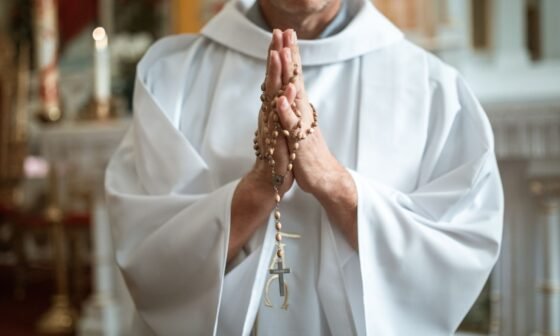What if praying for others isn’t just a suggestion—it’s a radical act of faith that shapes how we see the world? The early church didn’t view prayer as a passive ritual. It was a lifeline, a way to align with God’s heart for every person, even those who seemed undeserving or distant.
In 1 Timothy 2, the apostle Paul urges believers to pray for all people, emphasizing that this practice reflects God’s desire for everyone to know truth and find life in Christ Jesus. This wasn’t merely a spiritual duty—it was a revolutionary stance in a divided world. Early Christians prayed publicly for leaders, neighbors, and even enemies, trusting that prayer could bridge gaps and heal hearts.
Why does this matter today? Because praying universally challenges our biases. It reminds us that no one is beyond the reach of grace. The passage also highlights the role of men and women in prayer, setting the stage for deeper discussions about unity in the church.
At its core, 1 Timothy 2 invites us to see others through God’s eyes. When we pray for all people, we step into the transformative power of intercession—a practice that still defines vibrant faith communities.
Understanding the Context and Purpose of 1 Timothy 2
To grasp why this letter matters, we must travel back to Ephesus—a city swirling with spiritual confusion. The apostle Paul wrote to Timothy, a young leader navigating tensions in a church battling cultural pressures. As an apostle commissioned by God, Paul anchored his authority in “man Christ Jesus”, emphasizing Christ’s role as the bridge between divine truth and human need.
Historical Background and Authorship
Paul’s letter emerged in a society where pagan worship dominated. Ephesus housed the Temple of Artemis, making the church’s call to holiness urgent. The phrase “come knowledge truth” wasn’t abstract—it countered local myths with gospel clarity. Early believers needed structure, so Paul highlighted creation order (“Adam formed first”) to address disorderly worship practices.
The Letter’s Relevance to Early Church Practice
This wasn’t about control but cultivating faith that unites. The church faced internal debates about roles and teachings. By referencing “formed first” and Adam’s design, Paul rooted church order in God’s original intent, not cultural trends. Documents like the Didache show how early congregations applied apostolic guidance to maintain unity.
Paul’s words weren’t theoretical. They provided a roadmap for churches to thrive amid chaos—a reminder that truth, when lived out, transforms communities.
The Call to Universal Prayer and Intercession
Prayer isn’t a limited resource—it’s a boundless invitation to engage with God’s heart for humanity. Paul outlines four prayer types in this passage:
Supplications, Prayers, and Thanksgiving Explained
Supplications are urgent requests for specific needs. Intercessions involve advocating for others, while general prayers encompass worship and dialogue with God. Thanksgiving anchors these practices in gratitude, reminding believers of God’s faithfulness even in hard circumstances.
Praying for All People: From Leaders to Enemies
Early Christians prayed for Roman emperors who persecuted them, embodying Paul’s command. This wasn’t passive compliance—it was strategic faith in a god savior who desires all to “come knowledge truth” (1 Timothy 2:4). Their prayers:
- Strengthened unity amid persecution
- Softened hostile leaders’ hearts over time
- Modeled Christ’s love for adversaries
These prayers were paired with good works, like aiding marginalized groups. As James 2:17 notes, faith without action is incomplete. Intercession becomes transformative when coupled with practical compassion, reflecting God’s inclusive redemptive plan.
The Role of Public Prayer in Worship and Church Unity
Public prayer in early Christianity wasn’t just a ritual—it was the heartbeat of community life. Believers gathered to lift voices together, creating a shared rhythm of devotion that transcended individual differences. This practice wasn’t optional; it forged church identity and mirrored God’s vision for unified worship.
Public Prayer as a Unifying Practice
Early congregations saw corporate prayer as a binding force. When men led aloud, it symbolized collective submission to God’s authority. The act of “lifting holy hands” (1 Timothy 2:8) wasn’t theatrical—it visually declared purity and harmony. Historical records, like Justin Martyr’s accounts, show prayers opening gatherings, aligning hearts before teaching or communion.
Shared prayers also nurtured godliness. As believers interceded for leaders or persecuted members, they internalized Christ’s compassion. The Didache, an early church manual, instructed communities to pray “as the Lord commanded,” blending structure with spontaneity.
The Balance Between Personal and Corporate Prayer
Private devotion fueled public unity. Individuals brought refined faith to gatherings, while corporate worship deepened personal resolve. Early Christians:
- Prayed daily at set times (morning/evening)
- Recited Psalms together during meetings
- Rotated leadership among qualified men
This balance prevented ritualism. Personal authenticity enriched group expression, and collective prayers amplified individual burdens. The church became a sanctuary where “holy hands”—free from anger or division—pointed others to grace.
Exploring the Instruction on Men’s Prayer and Lifting Holy Hands
In ancient worship, posture spoke louder than words. The apostle Paul’s instruction to men about “lifting holy hands” (1 Timothy 2:8) wasn’t about ritual—it was a visual sermon. This practice reflected inner purity and collective submission to God’s authority. For early churches, it became a blueprint for unifying prayer leadership.
Importance of Lifting Holy Hands Without Anger
Lifting hands symbolized surrender, but Paul added a critical condition: “without anger or disputing.” Anger disrupted worship’s purpose—to align hearts with God’s peace. Historical records show early leaders trained men to examine their motives before leading prayer. A resentful heart, they believed, polluted corporate worship.
This posture also honored Christ’s role as “authority man”—the mediator who bridged humanity and divinity. By lifting hands, leaders visibly acknowledged their dependence on Him. It wasn’t performative; it was a declaration of humility.
Guidelines for Men Leading Prayer in Congregational Settings
Paul’s guidelines remain practical today. First, men called to lead prayer must prepare spiritually. This includes:
- Resolving conflicts before worship
- Focusing prayers on God’s character, not personal agendas
- Using clear, inclusive language that unites the church
Second, posture matters. Standing with holy hands raised—palms open upward—signaled readiness to receive and release God’s grace. Early church manuals, like the Apostolic Tradition, detailed these practices to maintain reverence.
Finally, congregations can adopt these steps:
- Train prayer leaders in biblical humility
- Create space for silent reflection before corporate prayer
- Regularly affirm Christ’s role as the ultimate “authority man”
These habits foster discipline, ensuring public prayer remains a unifying force rather than a platform for division.
The Biblical View on Women’s Roles in Teaching and Authority
The role of women in church leadership has sparked thoughtful dialogue for centuries. Paul’s instructions in 1 Timothy 2 focus on worship conduct, emphasizing harmony through modesty and ordered learning. These guidelines reflect both cultural realities and timeless spiritual principles.
Exploring Modesty and Submission in Worship
Paul urges women to dress modestly, avoiding “gold pearls” or elaborate hairstyles. This wasn’t about suppressing beauty but prioritizing inner godliness over outward display. In Ephesus, extravagant attire often signaled wealth or pagan affiliations. By rejecting excess, believers demonstrated humility and unity.
The call to “learn in silence” emphasizes receptive discipleship. Women were encouraged to study Scripture thoroughly before teaching—a practice ensuring doctrinal accuracy. Submission here refers to orderly worship, not inferiority, mirroring Christ’s own submission to the Father.
Interpretations Around “I Do Not Permit a Woman to Teach”
The phrase “permit woman teach” addresses specific Ephesian challenges. False teachers exploited inexperienced women, echoing Eve’s deception (Genesis 3). Paul’s restriction aimed to protect the church from doctrinal chaos, not silence women permanently.
Scholars debate “saved childbearing”—some view it as Mary’s role in Christ’s birth, others as women’s calling to nurture faith in homes. Regardless, it underscores faithfulness amid cultural pressures.
Key considerations include:
- Historical context of Ephesian false teachings
- Paul’s partnership with female leaders elsewhere (Phoebe, Priscilla)
- The goal of unified worship grounded in truth
These instructions invite churches to balance cultural awareness with scriptural obedience, fostering environments where all contribute respectfully.
1 Timothy 2 – Biblical Insights on Salvation and the One Mediator, Christ Jesus
At the heart of Christian faith lies a truth that reshapes eternity: salvation flows solely through Christ Jesus. This passage anchors the gospel in His unmatched role as the bridge between humanity and God. Without this mediator, Paul argues, no one could approach divine holiness.

Christ Jesus as the Sole Mediator Between God and Man
The phrase “one mediator between God and mankind” (1 Timothy 2:5) declares Christ’s exclusive authority. Ancient religions offered many intermediaries, but Paul strips away confusion. Only Jesus—fully divine and fully human—could restore broken fellowship. His sacrifice fulfilled the law’s demands, making Him the one mediator who understands human weakness yet radiates divine perfection.
This truth dismantles pride. No religious effort or moral achievement earns salvation. It’s received through faith in the man Christ Jesus, whose life, death, and resurrection sealed our redemption. Early believers clung to this hope amid persecution, knowing their access to God depended entirely on Him.
The Ransom and Redemption Message in the Gospel
Paul amplifies Christ’s sacrifice with the term “gave himself as a ransom” (1 Timothy 2:6). In Roman society, ransoms freed slaves. Jesus’ death similarly liberates us from sin’s grip. This wasn’t a partial payment—it covered all people, echoing God’s desire that “everyone come to knowledge truth”.
The gospel’s authority rests here: eternal life comes only through Christ’s blood. His resurrection validated His claim as the way, truth, and life (John 14:6). To reject His mediation is to forfeit the rescue He purchased.
Today, this message remains urgent. In a world searching for meaning, Christ alone offers a path from darkness to light—a ransom that still transforms hearts.
Guidelines for Church Leadership: Overseers and Deacons in Scripture
Healthy churches thrive under leaders who mirror Christ’s integrity. The apostle Paul outlines clear standards for overseers and deacons, blending spiritual maturity with practical wisdom. These roles weren’t about power but stewarding God’s flock with humility and skill.
Qualities and Qualifications for Overseers
Overseers, also called elders, must exemplify “knowledge truth” in word and deed. Paul’s criteria include:
- Being above reproach in character
- Managing their “children” and household well
- Teaching sound doctrine effectively
A leader’s “place” in the community hinges on integrity. For example, early overseers like Titus were tasked with appointing leaders who could refute false teachings—a role requiring deep scriptural authority. Their homes became microcosms of church order, proving their ability to shepherd others.
Expectations for Deacons and Their Role in the Faith
Deacons served as hands-on ministers, addressing practical needs so apostles could focus on teaching. Qualifications mirrored overseers’ standards but emphasized service over doctrine. They were to:
- Maintain clear consciences
- Exercise authority with gentleness
- Support widows and marginalized groups
Early deacons like Stephen (Acts 6) modeled this balance, distributing food fairly while defending the faith. Their work upheld unity, letting the church grow without division. Both roles, Paul insists, must align with apostolic teaching—the non-negotiable foundation for all ministry.
By grounding leadership in Christ, the “mediator god”, Paul ensures accountability. Leaders aren’t autonomous; they answer to divine authority and serve as stewards, not owners, of God’s people.
Living Out Godliness in Daily Life Through Faith and Good Works
True godliness isn’t confined to Sunday mornings—it reshapes how we work, love, and serve every day. Early Christians understood this, weaving faith into ordinary moments through good works that mirrored Christ’s compassion. Their example challenges us to bridge belief and action in a world hungry for authenticity.

Integrating Faith and Practical Good Works
First-century believers turned faith into fuel for service. They fed widows, sheltered travelers, and funded community aid—tangible good works that validated their message. Modern followers can adopt this mindset by:
- Volunteering consistently at local shelters or food banks
- Mentoring youth through church programs
- Advocating for justice in workplaces
These actions don’t earn salvation but demonstrate its transformative power. As James 2:26 notes, “faith without deeds is dead.”
Walking in Godliness in a Changing Cultural Context
Cultural shifts test our commitment to truth. Early Christians faced idolatry; today’s challenges include secularism and digital distractions. To continue faith amid pressure:
- Anchor decisions in Scripture, not trends
- Build relationships that model Christ’s love
- Partner with church communities for accountability
Both men and women play vital roles here. Fathers leading family devotions and mothers nurturing godliness in homes create ripple effects of faithfulness. Together, they uphold biblical authority while engaging culture with grace.
Ultimately, living out 1 Timothy 2 means letting truth shape our choices—one prayer, one act of kindness, one courageous stand at a time.
Conclusion
Living out the teachings of Scripture reshapes communities and ignites hope. The call to pray for all people—leaders, neighbors, even adversaries—remains a cornerstone of faith. Through intercession, believers align with God’s heart for redemption, breaking barriers of division.
Men and women each have distinct roles in nurturing the church. Leaders exercise authority with humility, guiding others toward truth. Women model godliness through wisdom and service, reflecting Christ’s inclusive love. Together, they create spaces where children learn to walk in grace.
True life flows from Christ alone, the “one mediator” who bridges humanity and holiness. His way invites us to live authentically—praying boldly, leading faithfully, and loving relentlessly.
What step will you take today? Whether mentoring youth, resolving conflicts, or lifting hands in worship, every act of obedience fuels transformation. Let your faith ripple outward, shaping a legacy of hope for generations to come.







